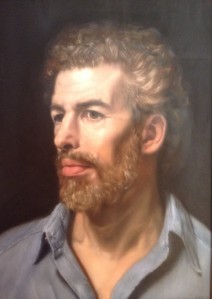In-Sight Publishing
Born to do Math 49 – Metaprimes (Part 15)
Born to do Math 49 – Metaprimes (Part 15)
Scott Douglas Jacobsen & Rick Rosner
April 25, 2017
[Beginning of recorded material]
Rick Rosner: You
can start to build a time out of association. Where you’ve got atom A and atom
B interacting a lot, we also see that atom B and atom C interact a lot. But as
you look the different interactors, that you can further order things so that
you can make further efficiencies because A and B may interact a lot at a given
time and A and C may interact a lot at a different time.
I don’t know how you
pull time out of it. Anyway, the universe is built on space and time, and space
and time are built on efficient arrangements of association, of highly
associated particles.
Scott Douglas Jacobsen: So they’re aren’t maximally then,
as a closing statement, but they are optimally efficient given various
constraints.
RR: They are
sloppily efficient. You’ve got these interactions. You have these informational
efficiencies and rules for informational efficiency, or for the efficient
structuring of space based on the interactions – space and time based on
associative interactions. Based on interactions, which are themselves
associative, those—you can assume that there’s going to be some of those
principles of ordering space and time are going to be efficient without being
maximally efficient.
Because they
probably depend on local efficiencies. But there is a multi-model approach here
too. You can represent the information here in various ways. There’s that
underlying efficiency.
SDJ: There are the higher-order efficiencies too.
RR: There’s the
“Travelling Salesman Problem” or the salesperson problem. You have to figure
out the order of cities that minimizes the overall distance the salesperson has
to travel. It turns out to be a problem that blows up computationally the more
cities that you have. There’s not an algorithm that can find you the overall
shortest distance without doing a huge amount of calculation.
Let’s say, and I
don’t know the math exactly, this is probably not the case, but computationally
it is similar to the case that you have to look at all 11 factorial paths. 12
factorial path, among the cities to find the shortest one, that is a number
that blows up hugely when you go to 20 cities and 100 cities. To find the
absolute shortest path would eat up a lot of computer time.
But there
are some algorithms that find you some good paths based on just comparing a few
cities at a time, like 3 or 4 and building the shortest path among those 4
proximate cities, then the next 4 proximate cities until you’ve established a
locally minimal path among each set.
[End of recorded material]
Authors[1]

Rick Rosner
American Television Writer
RickRosner@Hotmail.Com
Rick Rosner

Scott Douglas Jacobsen
Editor-in-Chief, In-Sight Publishing
Scott.D.Jacobsen@Gmail.Com
In-Sight Publishing
Endnotes
[1] Four format points for the session article:- Bold text following “Scott Douglas Jacobsen:” or “Jacobsen:” is Scott Douglas Jacobsen & non-bold text following “Rick Rosner:” or “Rosner:” is Rick Rosner.
- Session article conducted, transcribed, edited, formatted, and published by Scott.
- Footnotes & in-text citations in the interview & references after the interview.
- This session article has been edited for clarity and readability.
- American Psychological Association. (2010). Citation Guide: APA. Retrieved from http://www.lib.sfu.ca/system/files/28281/APA6CitationGuideSFUv3.pdf.
- Humble, A. (n.d.). Guide to Transcribing. Retrieved from http://www.msvu.ca/site/media/msvu/Transcription%20Guide.pdf.
License
In-Sight Publishing and In-Sight: Independent Interview-Based Journal by Scott Douglas Jacobsen is licensed under a Creative Commons Attribution-NonCommercial-NoDerivatives 4.0 International License.
Based on a work at www.in-sightjournal.com and www.rickrosner.org.
Copyright
© Scott Douglas Jacobsen, Rick Rosner, and In-Sight Publishing and In-Sight: Independent Interview-Based Journal 2012-2017. Unauthorized use and/or duplication of this material without express and written permission from this site’s author and/or owner is strictly prohibited. Excerpts and links may be used, provided that full and clear credit is given to Scott Douglas Jacobsen, Rick Rosner, and In-Sight Publishing and In-Sight: Independent Interview-Based Journal with appropriate and specific direction to the original content.
No comments:
Post a Comment